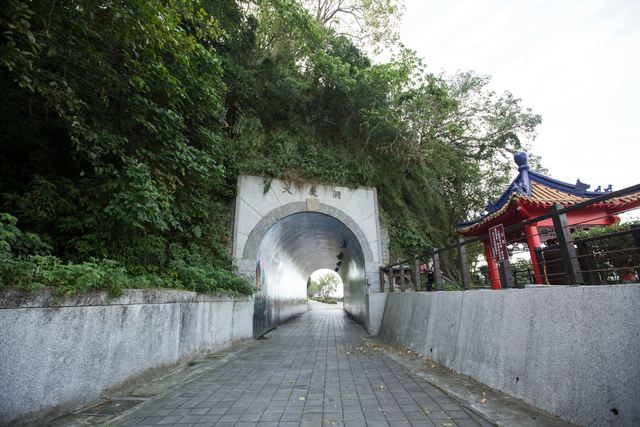Daqing Cave Introduction
The newly opened Daqing Cave brings a new travel vibe to the Daxi area of Taoyuan, offering visual surprises for leisurely walks through the ancient town. Located by the Daxi Bridge and the Dahan River, Daqing Cave was once a narrow tunnel that served as an essential route for traffic between Taoyuan and Daxi. With the completion of the Wuling Bridge, it is no longer a thoroughfare; under the renovation efforts by the Taoyuan City Government and the Daxi District Office, it has successfully transformed into an entrance to a recreational sightseeing path, featuring a stone path that leads to Daxi Old Street, making it a must-visit new attraction in Daxi. Once referred to as the gateway to Daxi, Daqing Cave is 27.5 meters long, 5 meters wide, and 5.8 meters high. In its early days as a road tunnel, numerous vehicles passed through, but as vehicle sizes increased, the low entrance became a bottleneck, causing traffic congestion. Notably, when the funeral vehicle of former President Chiang Kai-shek was moved to Cihu, the height of the hearse was too tall, necessitating an urgent lowering of the road surface of Daqing Cave by two meters to allow the vehicle to pass, creating the current unique elevated roadway appearance. With the opening of the Wuling Bridge, Daqing Cave no longer accommodates vehicles and has become a pedestrian-only area. To explore the famous Daxi Old Street, one can ascend the century-old stone path next to Daqing Cave, leading to the historic old street that best represents Daxi’s characteristics, featuring Baroque-style street houses and deep historical traces that evoke nostalgia. The carved patterns on residential walls not only serve a decorative purpose but also complement the Baroque architecture. Additionally, the concept of an ecological museum has been introduced, connecting various historical street houses, making the entire Daxi journey more vibrant.

































